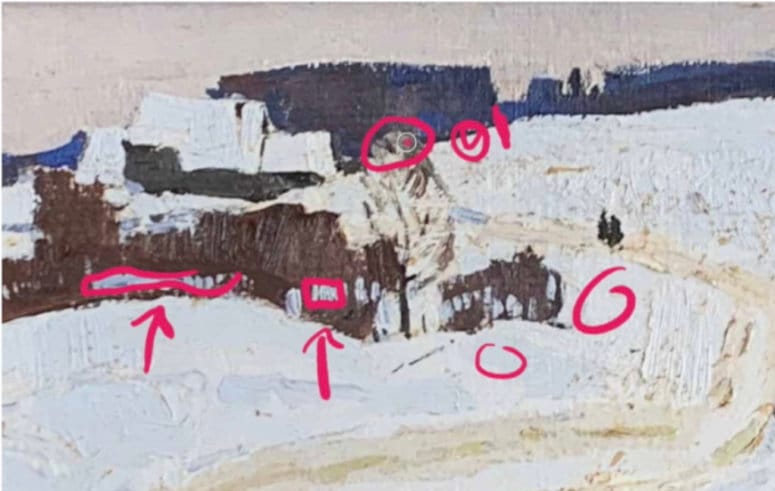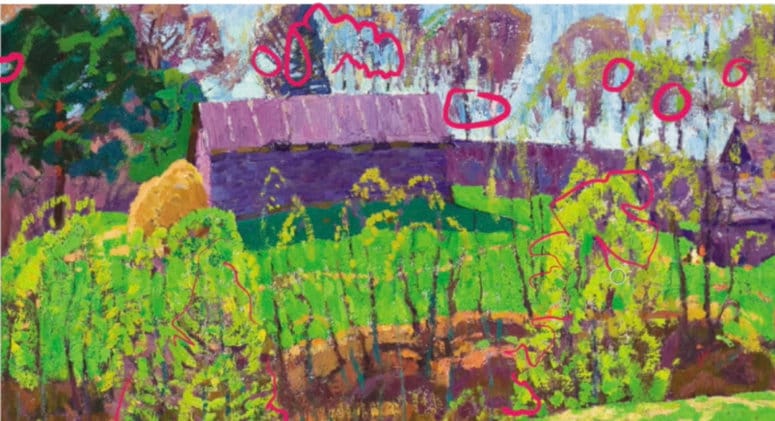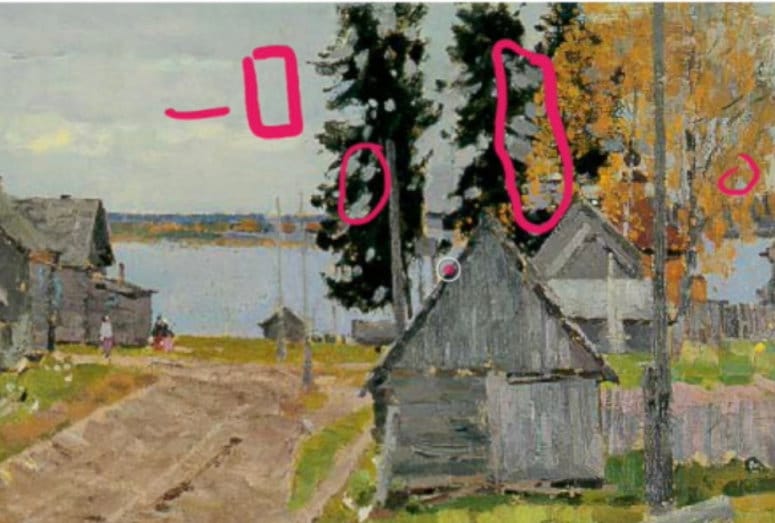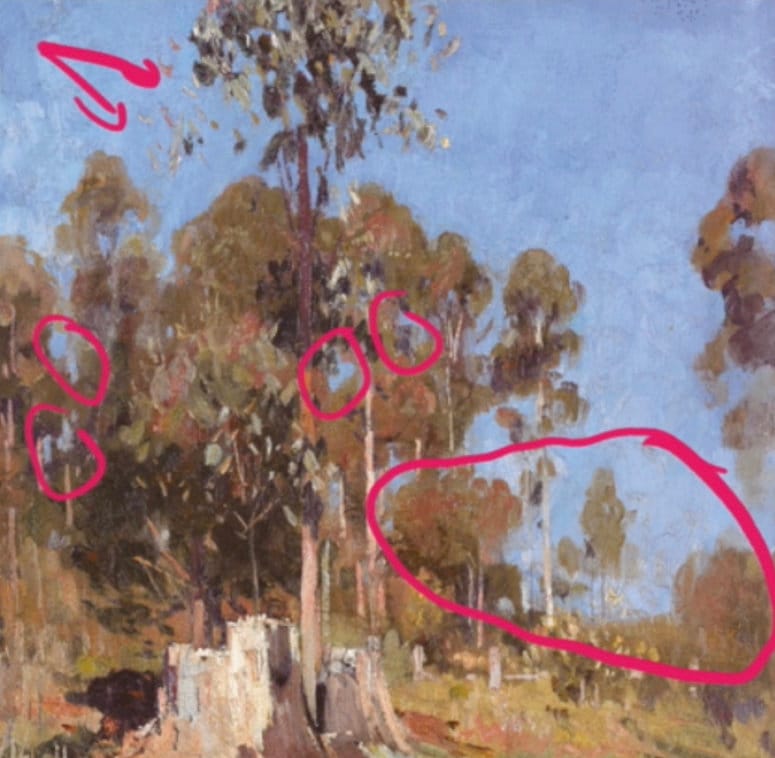How to Paint Trees for Beginners – Master’s Analysis
Study how master artists handled trees, sky holes, and refraction. Learn how simplification and edge control make your acrylic tree paintings more natural.

In this lesson, we’ll wrap up the tree and sky-hole series by studying how master painters handled similar challenges — simplifying complex trees, managing edges, and using refraction to keep their paintings natural and believable.
Even though I’m showing examples from different artists, the ideas connect directly to what we’ve been doing in this acrylic tree painting series. You’ll see how simplification and refraction work together to create realistic light and form, without getting caught up in tiny details.
This lesson is part of the Acrylic Landscape Painting Fundamentals Course
Simplification in Master Paintings
Let’s start with Isaac Timkov, who’s known for his confident brushwork and atmospheric designs.
If you look at his snow scenes, there aren’t a ton of visible sky holes — but that’s an intentional decision. He simplified his tree masses, grouping shapes together rather than breaking them into a thousand branches.
In reality, those trees probably had plenty of gaps and smaller branches, but he chose to leave them out. The result? A stronger design and a clearer sense of light and structure.
This is the same idea we used back in Part 1 — simplify first, then suggest detail later.

Refraction in Action
Even in these simplified trees, you’ll notice that the colors inside the lighter areas — like snow or sky seen through branches — are slightly darker or bluer than the open sky.
That’s refraction at work: the dark tree mass affects the light passing through, so those sky holes appear softer and slightly darker.
When you study the master paintings, look for this pattern:
- Large sky holes = lighter and cleaner
- Small sky holes = darker, affected by the tree mass
- Simplified groups = less contrast, smoother edges
Timkov’s handling of this principle keeps everything cohesive — the trees blend naturally into the background rather than sitting on top of it.

Edge Variety and Aerial Perspective
In one of his more detailed pieces, Timkov increases edge activity and detail as the trees move closer to the viewer.
The foreground trees show more sky holes, sharper contrasts, and visible texture. The background trees become softer, more unified, and less defined — a perfect example of aerial perspective and simplification through distance.
This shift in edge quality helps guide your eye naturally through the scene — something to remember in your own beginner tree paintings.


What You Can Take Away
- Simplify first; detail later
- Sky holes get darker and smaller as they move into shadow
- Vary your edges — soft in the distance, sharper in the foreground
- Use refraction to soften transitions and avoid cut-out edges
- Think like a designer — not a copy machine
Course Navigation
Next Lesson: Tree & Sky Hole Assignment, where you’ll apply these ideas to your own painting.
Previous Lesson: How to plant Trees or Beginners Trees & Sky Holes Part 3
Continue the Course: Acrylic Landscape Painting for Beginners
Learn & Improve Your Acrylic Skills
- Acrylic Hub– Your go-to guide for tutorials, tips, and resources.
- Ultimate Beginner Acrylic Course - Start painting with confidence.
- Subscribe for More Great Content - Get tutorials, tips, and updates straight to your inbox.
- Follow Me on Pinterest - Daily inspiration, tips, and fresh ideas.
Recommended Acrylic Painting Materials
-
Princeton Catalyst Brushes – Flats (#6, #12), Rounds (#4, #8), Fan (#4), Liner Brush
Durable synthetic bristles for versatile acrylic techniques -
Liquitex Heavy Body Acrylic Paint – Essential Colors
Cadmium Yellow, Yellow Ochre, Alizarin Crimson, Cadmium Red Light, Ultramarine Blue, Cobalt Blue, Burnt Sienna, Titanium White -
Winsor & Newton Cotton Canvas
Reliable stretched canvas for studio and plein air work -
Strathmore 400 Series Mixed Media Paper
Heavyweight, acid-free paper for acrylic and mixed media -
Fabriano Artistico 140lb Cold Press Paper
Excellent for acrylic, mixed media, and textured effects -
Blick Multi-Colored Painting Knife Set
Variety of shapes for texture, scraping, and bold strokes - Miscellaneous: Two pint-sized water containers, paper towels (from Home Depot or Walmart)
- Note: I use canvas or sturdy cardboard as my palette — no store-bought palettes needed.




